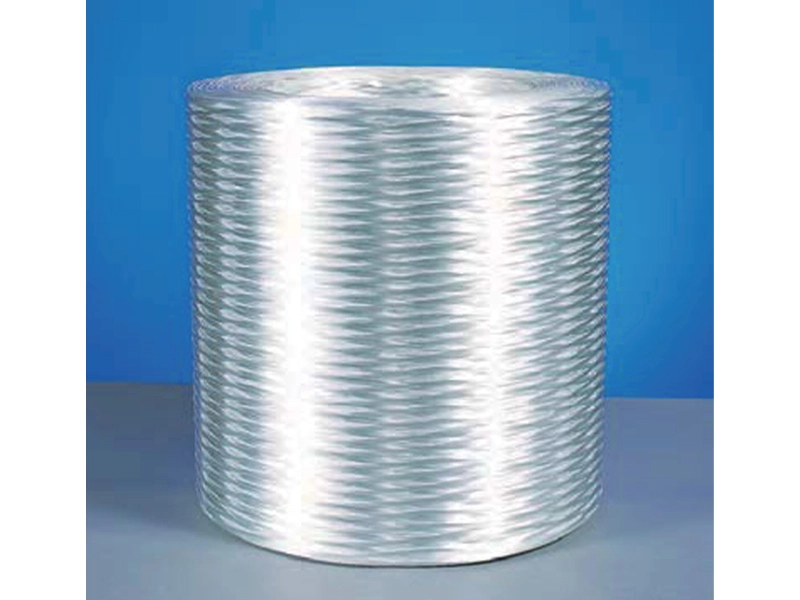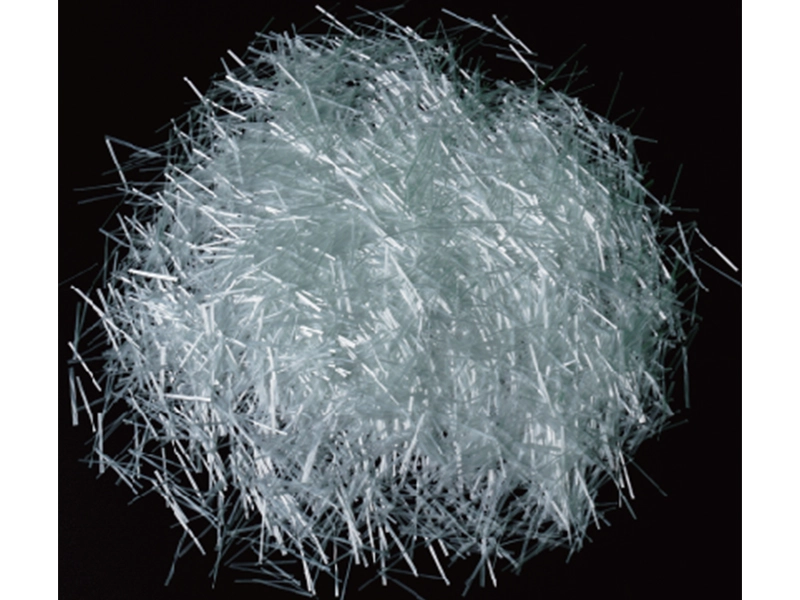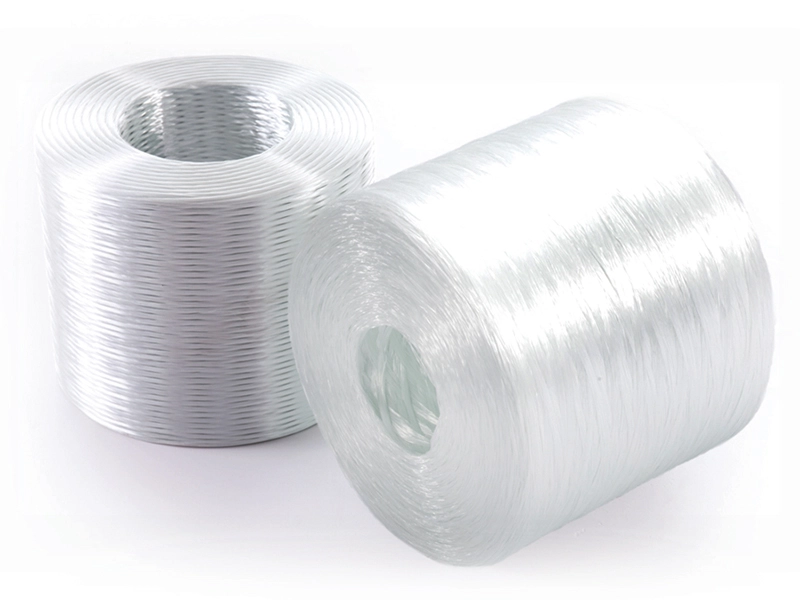Spraying roving, also known as chopped strand roving, is a fiberglass reinforcement material primarily used in spray-up processes. It is composed of continuous strands of E-glass (electrical-grade glass) filaments, coated with a sizing compatible with polyester, vinyl ester, epoxy, or polyurethane resins. This type of roving is designed for use in open-mold spray-up applications where the roving is chopped and simultaneously deposited with resin using a spray gun.
Product performance introduction
Spraying roving is known for its fast wet-out, excellent dispersion, and strong adhesion to the resin matrix, making it an ideal reinforcement in the fabrication of composite products such as bathtubs, boats, automotive parts, storage tanks, and various construction components.
2. Product Features and Characteristics
-
Compatibility: Spraying roving is available with different sizing systems to ensure compatibility with a wide range of resins, including:
-
Unsaturated polyester (UP)
-
Vinyl ester (VE)
-
Epoxy (EP)
-
Phenolic and polyurethane systems
-
-
Even Dispersion: Designed to provide uniform chopping and easy dispersion of strands with minimal fuzz generation.
-
High Integrity: Offers excellent strand integrity and resistance to fuzzing and static buildup during processing.
-
Fast Wet-Out: Enables quick resin impregnation, improving production efficiency and reducing air entrapment.
-
Excellent Mechanical Properties: Provides high tensile, flexural, and impact strength in finished parts.
-
Corrosion Resistance: Like all fiberglass products, spraying roving is highly resistant to chemical corrosion, making it suitable for marine and chemical industry applications.
-
Dimensional Stability: Resistant to shrinkage, warping, or deformation under heat and moisture.
3. Applications
Spraying roving is widely used across multiple industries. Below are key applications:
3.1 Marine Industry
-
Boat hulls and decks
-
Canoes and kayaks
-
Personal watercraft components
3.2 Sanitary Ware
-
Bathtubs
-
Shower stalls
-
Washbasins
-
Water tanks
3.3 Automotive
-
Body panels
-
Hoods
-
Interior components
-
Truck parts
3.4 Construction and Infrastructure
-
Wall panels
-
Corrugated sheets
-
Roofing components
-
Pipe liners and covers
3.5 Industrial Equipment
-
Chemical storage tanks
-
Ducts and hoods
-
Machine housings
3.6 Recreational Goods
-
Surfboards
-
Water slides
-
Playground equipment
4. Manufacturing Process: Spray-Up Technology
Spraying roving is primarily applied using the spray-up technique, a widely used open-mold process. Here’s how it works:
4.1 Equipment
-
Spray gun fitted with a chopper
-
Resin reservoir and pump system
-
Compressed air source
-
Catalyst injection system
-
Open mold (typically coated with a gel coat)
4.2 Process Steps
-
Mold Preparation: Apply a mold release agent and gel coat.
-
Chopping and Spraying: The roving is fed through the chopper and sprayed simultaneously with resin and catalyst.
-
Rolling and Compaction: A roller is used to compact the laminate, removing air bubbles and ensuring uniform thickness.
-
Curing: The part is left to cure at room temperature or under heat, depending on the resin system.
-
Demolding and Trimming: Once fully cured, the part is removed from the mold and trimmed as required.
5. Advantages of Spraying Roving
-
Ease of Use: Simplifies the reinforcement process by integrating chopping and deposition.
-
Cost-Effective: Reduces labor and time compared to hand lay-up methods.
-
High Productivity: Enables faster build-up of laminate layers.
-
Design Flexibility: Suitable for complex shapes and large surface areas.
-
Improved Resin Control: Optimized resin-to-glass ratio contributes to part performance and weight optimization.
-
Surface Finish Quality: Compatible with gel coats for excellent surface aesthetics.
6. Technical Data Sheet (TDS)
Product Name: Spraying Roving
Glass Type: E-glass
Form: Continuous strand roving for spray-up
6.1 Physical Properties
| Property | Typical Value |
|---|---|
| Filament Diameter | 13–17 microns |
| Linear Density (Tex) | 2400, 3000, 4800 |
| Moisture Content | ≤ 0.10% |
| Size Content | 0.8–1.2% (depending on compatibility) |
| Choppability | Excellent |
| Dispersion | Uniform |
| Fuzz Level | Very Low |
6.2 Mechanical Properties
| Property | Typical Value |
|---|---|
| Tensile Strength | > 1800 MPa |
| Tensile Modulus | > 72 GPa |
| Flexural Strength | > 1200 MPa (in composite) |
| Impact Resistance | High |
| Elongation at Break | 2.5–3.0% |
6.3 Compatibility Options
| Resin Type | Compatible Sizing Code |
|---|---|
| Unsaturated Polyester | UP Series |
| Vinyl Ester | VE Series |
| Epoxy | EP Series |
| Polyurethane | PU Series |
7. Packaging & Storage
Packaging
-
Roving is wound onto cylindrical cardboard bobbins or pancakes.
-
Each roll is typically 15–25 kg depending on tex.
-
Rolls are shrink-wrapped and packed in cardboard boxes or pallets.
-
Pallets are stretch-wrapped for moisture protection.
Storage
-
Store in a dry, cool, and well-ventilated area.
-
Recommended temperature: 15–35°C
-
Relative humidity: < 65%
-
Avoid direct sunlight and contact with moisture.
Shelf Life: 12 months from the date of manufacture when stored under optimal conditions.
8. Handling & Processing Guidelines
-
Unwinding: Use a creel system to maintain tension and prevent fuzzing or tangling.
-
Cutting: Ensure the chopper blades are sharp to maintain uniform strand lengths.
-
Air Pressure: Optimize air pressure in spray guns to ensure even spray patterns.
-
Roller Application: Use rollers immediately after spraying to improve consolidation and remove trapped air.
9. Safety and Environmental Information
Health and Safety
-
Spraying roving is a non-hazardous product under normal conditions.
-
Mechanical irritation to skin, eyes, and respiratory tract may occur during handling.
-
Use personal protective equipment (PPE) such as:
-
Gloves
-
Goggles
-
Dust masks or respirators
-
First Aid Measures
-
Skin Contact: Wash with soap and water.
-
Eye Contact: Rinse thoroughly with water.
-
Inhalation: Move to fresh air and seek medical advice if symptoms persist.
Environmental Impact
-
Non-toxic and non-reactive under normal disposal.
-
Complies with environmental regulations for industrial fiberglass products.
-
Recyclable in some processes or can be safely landfilled in accordance with local laws.
10. Customization and Technical Support
Manufacturers often provide custom spraying rovings tailored to specific production needs. Options include:
-
Custom tex values
-
Specialized sizing agents for unique resins
-
Color-coded or tracer filaments for identification
-
Eco-friendly or reduced-emission formulations
Technical support is typically offered to assist in optimizing spray-up parameters and improving part quality, with services including:
-
On-site technical consultation
-
Spray equipment calibration
-
Defect analysis and troubleshooting
-
Training and education on best practices
11. Conclusion
Spraying roving is an indispensable material in the composites industry, valued for its ease of use, versatility, and performance. Whether you're manufacturing boats, bathtubs, automotive components, or construction panels, spraying roving provides a cost-efficient and high-strength reinforcement solution that adapts to complex shapes and production environments.
By choosing the appropriate tex, sizing, and spray-up parameters, manufacturers can optimize productivity while delivering durable, high-quality composite parts. With advancements in sizing chemistry and application methods, spraying roving continues to evolve, offering greater performance, compatibility, and sustainability for modern composite applications.
Spraying roving
Series :
Fiberglass Assemble Roving >application
Automotive / Consumer Goods and Business Equipment / Sports and Leisure / Electrical and Electronics / Building and Construction / Infrastructure
Glass type :
E
Sizing type :
Silane
Typical filament diameter (μm) :
13
Typical linear density (tex) :
2000
Example :
EDR13-2000-910A
FAQ
Q :
Are you a factory? Where are you located?
A :
We are manufacturer of FRP grating and pultruded profiles, trader of FRP yarn materials. We are the largest distributor of China Jushi Co. We also sell products of several FRP yarn manufacturers. We are in Anhui, China.
Q :
What information is recommended for the inquiry?
A :
1. Which tex you need? 2. What the application you use it for? Or the tecnologh, is weaving, pultrusion or winding? 3. How many quantity do you need? 4. What resin do you combined for? Polyester resin or epoxy resin? 5. Do you need FOB or CIF price, if CIF, please tell us your port.
Q :
What's the MOQ?
A :
Usually 1 Ton
Q :
Package & Shipping
A :
Normal package:carton(Incuded in the unite price) Special Packge: need to charge according the actual situation. Normal shipping :your nominated Freight forwarding.
Q :
When can I offer?
A :
We usually quote within 24 hours after we get your inquiry. If you are very urgent to get the price pls call us or tell us in your email , so that we can reply you priority.
Q :
How do you charge the sample fees?
A :
If you need a samples from our stock, we can provide to you for free, but you need to pay the freight charge.If you need a special size, We will charge the sample making fee which is refundable when you place an order.
Q :
What's your delivery time for production?
A :
If we have stock , can delivery in 7 days ; if without the stock, need 7~15 days !
Other related products




